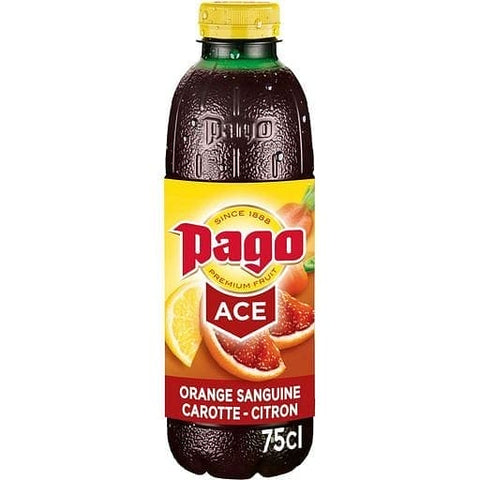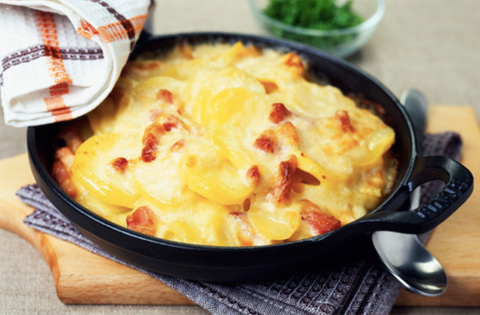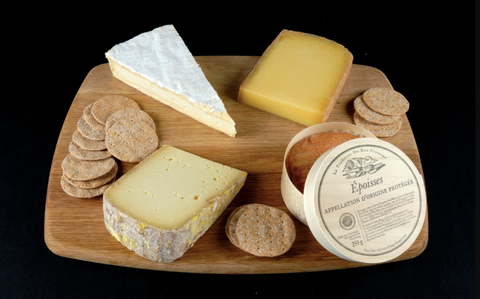Champignons (Mushrooms)
French Mushrooms, or Champignons de Paris, are a common ingredient in French cooking. A type of button mushroom can be used in everything from sauces to soups and stews. In addition, they are relatively inexpensive and easy to find at most grocery stores.
French mushrooms are not the only type to use in French cooking. Depending on the dish, you can also use cremini, chanterelle, portobello, or shiitake mushrooms. However, they're often easy to substitute with white button mushrooms if you can't find them at your local store.
To prepare French mushrooms for cooking, run them under cool water and brush off any dirt before using. They will cook down significantly during the cooking process, so if you're using them as a garnish or side dish, they can be sliced into quarters or halved before cooking. If you prefer whole mushrooms, try slicing them thickly lengthwise and then cutting those slices into smaller pieces.
They're often cooked with onions and garlic as part of the mirepoix for sauces or soups (referred to as duxelles). Duxelles is one of the most common ways to prepare French mushrooms, but they can be served alone as an aside.
Variety of French Mushrooms
French mushrooms are a variety of mushrooms that is widely cultivated in France. The most common types are the "button mushroom" and the "portobello mushroom." The former has a white cap, while the latter is larger and brown. Both of these mushrooms have a mild and earthy taste.
Mushrooms have been cultivated in France since at least the 19th century. While they were once a luxury item, they are now commonly farmed on industrial farms. In France, button mushrooms are found in supermarkets year-round, but portobellos can be difficult outside of speciality stores.
French mushrooms are sometimes known as Paris mushrooms because they were once grown in the caves beneath Paris, such as the famous catacombs.
What Mushrooms grow in France?
There are a lot of mushrooms in France, and they are pretty much everywhere! They can be found in woods, fields and even in your backyard.
Mushrooms are a type of fungus similar to plants, but they aren't the same. They don't have chlorophyll, and they don't make their food as plants do. Instead, mushrooms feed on decaying matter such as dead trees or rotting logs. If you look closely at any tree stump, you may find mushrooms growing out of it!
Mushrooms are edible, but some can be poisonous or even deadly if you eat them. So always be careful when picking mushrooms from the wild and make sure you know what kind of mushroom it is before eating one!
Here is a list of some common mushrooms that grow in France:
Mushroom Name: Shaggy Mane Mushroom
Edibility Rating: Edible with caution
Mushrooms that are used in French cooking
You are allowed to use the mushrooms, shallots, and garlic in your pantry. If you have access to a mushroom farm, you can use any mushroom available at the time (the more unusual, the better). If you have access to a grocery store with a wide selection of mushrooms, go there.
The most common mushrooms in French cooking are the brown crimini and portabella mushrooms. The white button mushrooms that we see at our local grocery stores are called champignons de Paris (Paris mushrooms) in French. Many different types of wild edible mushrooms grow in France (I've seen them growing on the side of the road or abandoned fields).
Popular Mushrooms for eating
Many mushrooms are used for culinary purposes in French cooking.
The two most popular mushrooms are the common button mushroom, Agaricus Bosporus, and the field mushroom, Agaricus campestris. Along with some other members of the genus Agaricus, they have been widely cultivated and consumed by humans since prehistoric times.
These two mushrooms are popularly used in French cuisine to enhance the flavour of dishes and add nutrition.
Some other mushrooms include:
- Morel - Morchella esculenta
- Oyster mushroom - Pleurotus ostreatus
- Shaggy mane - Coprinus comatus
French Sautéed Mushrooms
In French cuisine, sautéed mushrooms are a popular side dish or garnish.
The mushrooms can be cooked whole or sliced and cooked in butter. The mushrooms are fried in a pan on high heat, then turned down and simmered until they have absorbed all the liquid they have given off. They are seasoned with salt and pepper, which is added to cooking. If small button mushrooms are used, they can be left whole; large flat ones should be sliced. Traditionally the mushrooms would be fried in butter, but olive oil may now be used.
Sautéed mushrooms are often served with meat dishes.
Cooking Sauteed Mushrooms without getting them watery
Mushrooms are full of moisture. But if you saute them without letting them steam out first, they'll end up steaming themselves in the pan. This isn't a problem in and of itself, but any added liquid will dilute the seasoning and make the texture less than ideal.
The key to sauteed mushrooms that aren't swimming in their juices is to let them sweat until they release most of their moisture and then fry them.
Here's how:
- Heat the pan over medium-high heat and add some oil or butter. Add the mushrooms, spread them out evenly, and season with salt and pepper.
- Let them cook undisturbed for about 3 minutes until they're well browned on one side. Then, flip each mushroom individually so that it cooks evenly. (If you stir them, they'll steam again.)
- Let cook for another 3 minutes or so, until well browned on both sides. If there's still a lot of liquid in the pan at this point, keep cooking until it evaporates.
- Add any other ingredients you want, such as garlic or herbs, and cook for a minute or two more before serving.

Types of mushrooms
We get asked a lot of questions, so we thought it was about time we wrote a blog to help you identify each type of mushroom.
The mushroom world is divided into two main factions: cultivated and wild. Many different types of mushrooms range in size, shape, and flavour discussed below:
Cultivated Mushrooms
These are grown all year round in the UK. You can find them in most supermarkets or market stalls. The main types of mushrooms are:
1) Button Mushrooms (Champignons de Paris)
2) Flat Mushrooms (Champignons de Couche)
3) Oyster Mushrooms (Champignons de Paris Pleurotus)
4) Chestnut Mushrooms (Champignons Bruns)
5) Shiitake Mushrooms (Champignons Japonais Noire)
Wild Mushrooms
These are extremely seasonal and grow in the wild, usually after the first autumn rains and until frost sets in. They can be found at local markets or specialist mushroom shops. Each season brings its selection of mushrooms, but broadly speaking, you can divide them into two categories: edible and poisonous!
Healthiest mushrooms
With so many types of mushrooms out there, you may be wondering what the healthiest mushroom is? The answer is it depends on what you're looking for. From their delicious flavour to their amazing nutritional benefits, mushrooms can make a great addition to any meal.
Here are the top 5 most popular edible mushrooms and their health benefits:
- White Button Mushrooms
- Crimini / Baby Bella Mushrooms (brown)
- Oyster Mushrooms
- Shiitake Mushrooms
- Portabella Mushrooms
Mushrooms are a type of fungus. They grow in the wild and are also grown commercially, like other types of food crops such as tomatoes and wheat. There are thousands of different kinds of mushrooms. Some are edible, some are poisonous, and some are hallucinogenic.
While mushrooms don't contain many nutrients, they do have a good amount of B vitamins such as riboflavin, niacin and pantothenic acid, as well as copper and selenium. These nutrients play an important role in supporting energy metabolism, brain function and immune system health.
Is a Mushroom a Protein or a Carb?
Mushrooms are neither a protein nor a carb, but they contain both. There are about 17 grams of carbs in one cup of sliced mushrooms and about 1.5 grams of protein. As a result, they are very low in calories (only about 20 calories per serving).
Protein and carbohydrates are the body's main sources of energy. Carbs get broken down into glucose, while fiber is not absorbed by the bloodstream and passes through the body undigested. Proteins are broken down into individual amino acids during digestion. The body uses amino acids to build muscle, bone, and cartilage.
Mushrooms have a lot of fiber in them and can help you feel full with fewer calories, which is great if you're trying to lose weight.
What should not be eaten with the mushroom?
Mushrooms are one of the most versatile ingredients you can have in your kitchen. You can add them to your salads, stir-fries, pasta, soups, and even pizza! They're nutritional too and, most importantly, delicious.
But what should you not eat with mushrooms?
Certain foods taste bad with mushrooms. Here are some foods that you should never eat with mushrooms:
- Alcohol
- Coffee
- Beans
- Onions
- Asparagus
Mushrooms are a great source of protein, vitamins and minerals.
But do we need to have any restrictions on their consumption?
Here we have listed down the foods you should avoid eating with mushrooms.
- Mushrooms + Dairy Products = Complications: Mushrooms are fungus and have zero calcium content. This makes it incompatible with milk/dairy products and eggs in general. Therefore, you are likely to fall sick if you consume them together.
- Mushrooms + Starches = Digestion Problems: Mushrooms are rich in fiber, but at the same time, they lack some digestive enzymes that are found in starch-rich foods like pasta or bread. Therefore, combining them may cause indigestion and bloating issues in the stomach.
- Mushrooms + Fruit Juice = Intoxication: Although it is a rare combination, there have been instances when fruit juice was mixed with mushrooms, people got intoxicated, resulting in vomiting, headaches, and irritation. So, play safe and keep these two food items apart from each other.
Can we eat Mushrooms daily?
Mushrooms are edible fungi that are rich in nutrients. They have high protein content, and they come with many health benefits. However, there's always a question of whether we can eat mushrooms daily or not. So, let's find out whether we can eat mushrooms daily or not.
The short answer is yes; you can eat mushrooms every day. Doing so comes with several health benefits and few risks.
Mushrooms are low in calories, fat-free, cholesterol-free and very low in sodium, yet they provide important nutrients, including selenium, potassium, riboflavin, niacin and vitamin D.
- Eating more mushrooms can help you meet the recommended intake of these nutrients while reducing your calorie and fat intake.
- Mushrooms are an excellent source of antioxidants that protect your body against free radicals.
Eating Mushrooms and Eggs together
If you've ever wondered if you can eat eggs and mushrooms together, then you can eat them together. Mushrooms can add a lot of delicious flavour to your eggs. However, there are some reasons why you may not want to eat these two foods together. We'll look at those reasons below and then give you a few tips on how to spice up your eggs with mushrooms.
Eggs and mushrooms are a classic combination that can be found in many dishes, such as omelette, scrambles, and frittatas, as well as stir-fries and pasta dishes. They go well together because mushrooms have earthy flavours that complement the rich flavour of eggs.
There's some evidence that people have been eating mushrooms with eggs for thousands of years! A 30,000-year-old fossilized eggshell found and that was covered in microscopic mushroom spores. This discovery suggests that humans were using mushrooms to decorate their food long before cooking it!
So if people have been eating these two foods together for so long, why do some people say it's not healthy?
Eating Mushrooms with Chicken
Eating chicken and mushrooms is perfectly safe, as long as you take the necessary precautions to avoid food poisoning. Chicken and mushrooms are both nutritious foods. They're high in protein and low in calories, fat, and carbohydrates.
So when it comes to French mushrooms, you don't get much more delicious than the chanterelle.
This golden mushroom has a fruity, peppery flavour with notes of apricot and is prized by chefs worldwide. The chanterelle is also known as the girolle and the pfifferling — so you may need to look out for these names on menus if they don't simply say “chanterelle” and you must have to try this mushroom.




